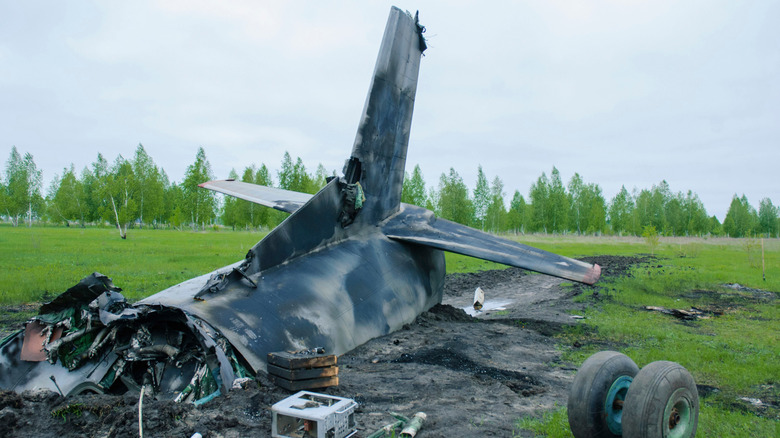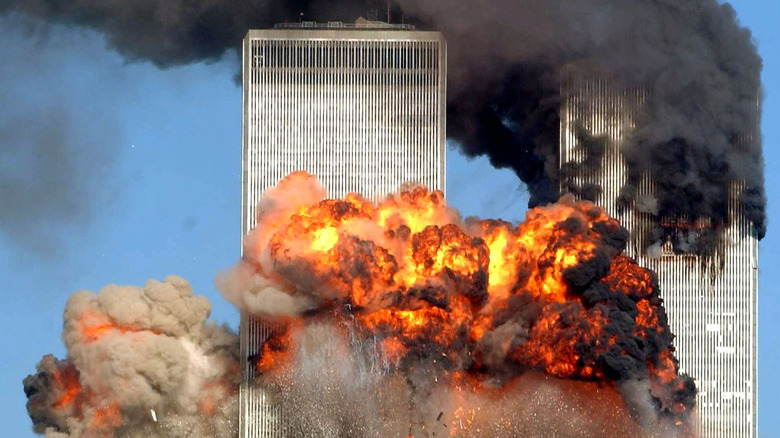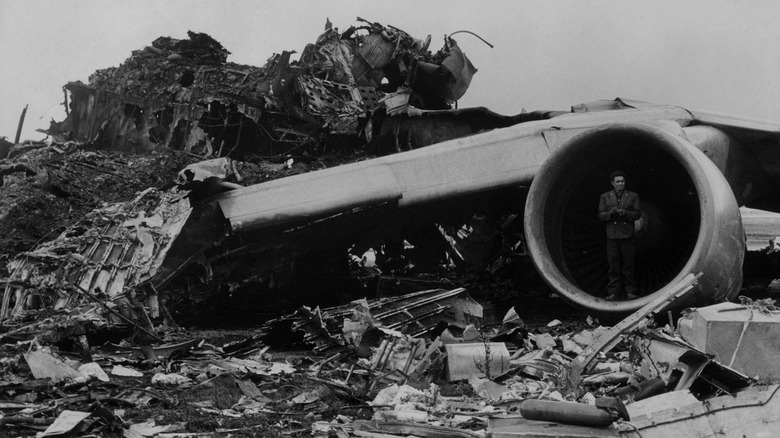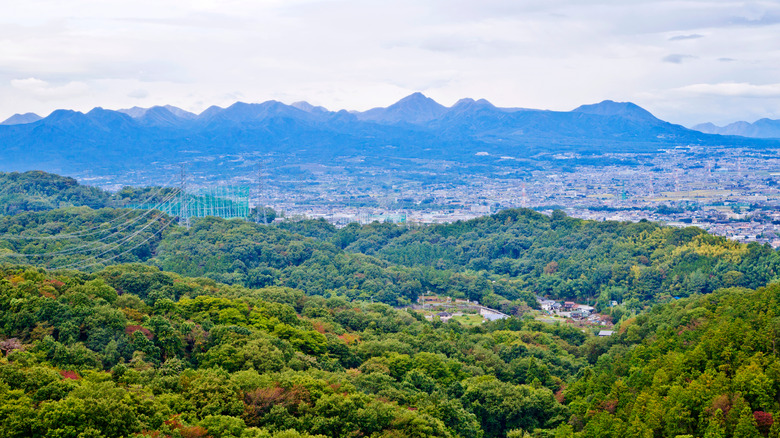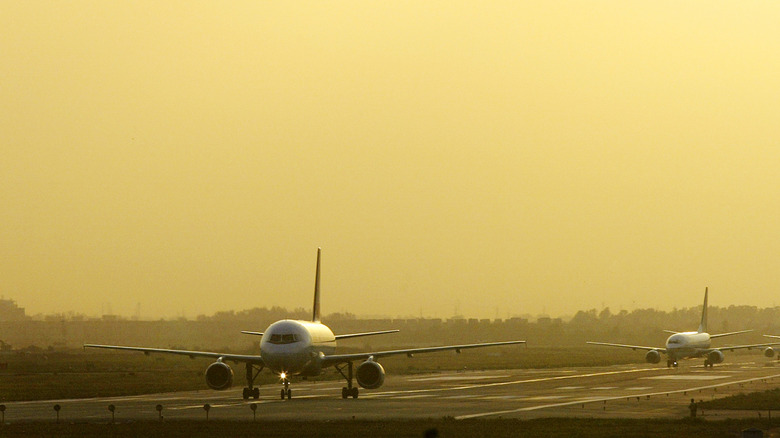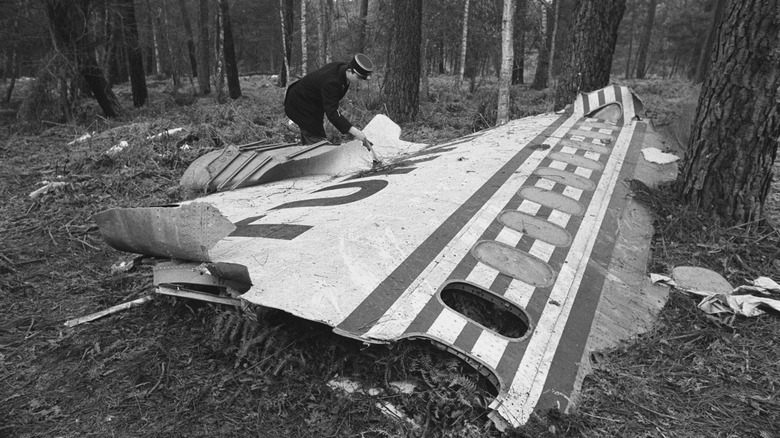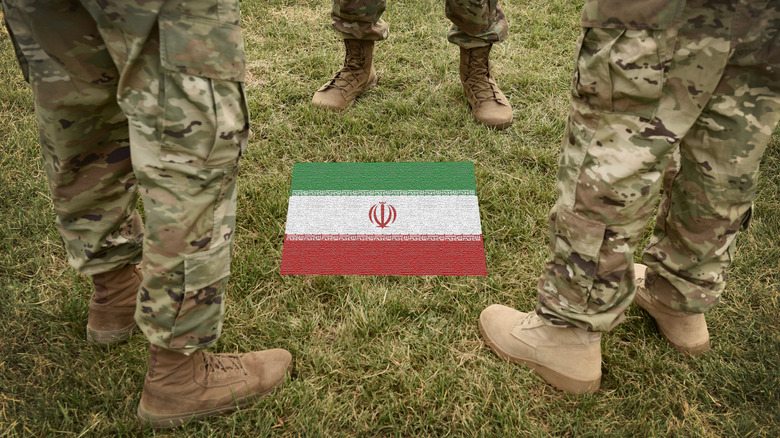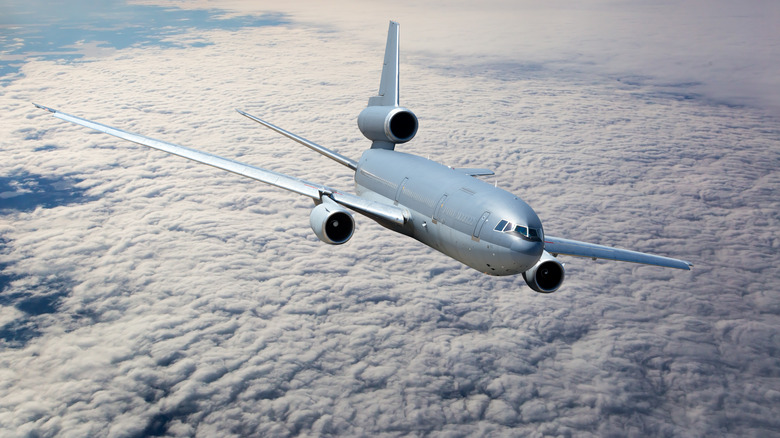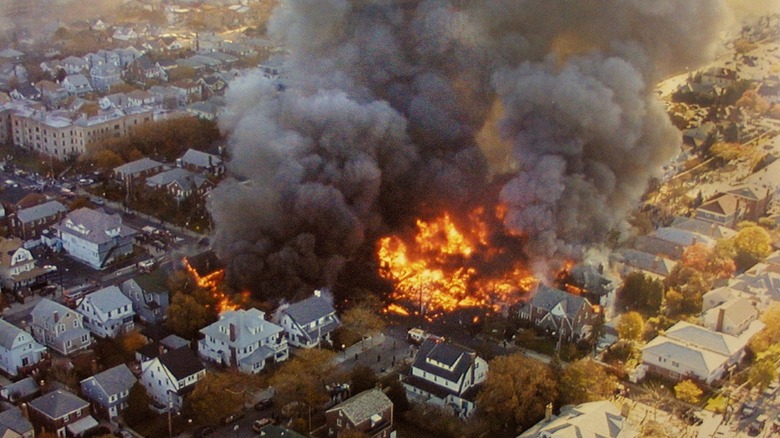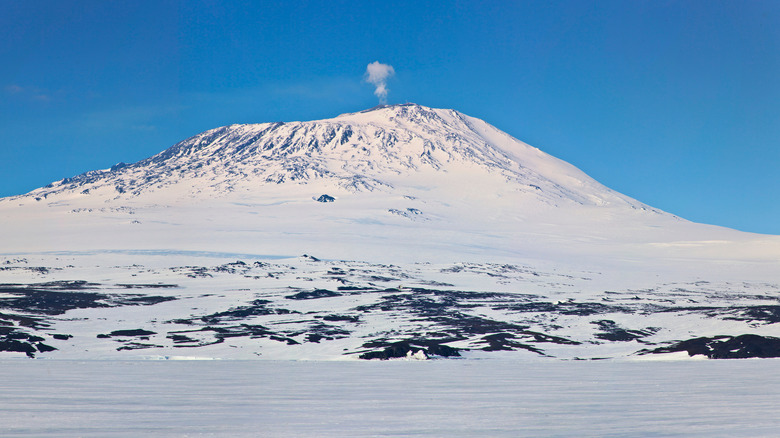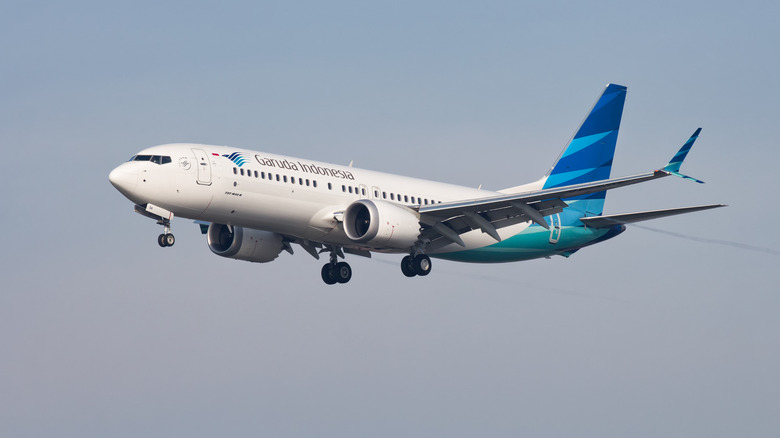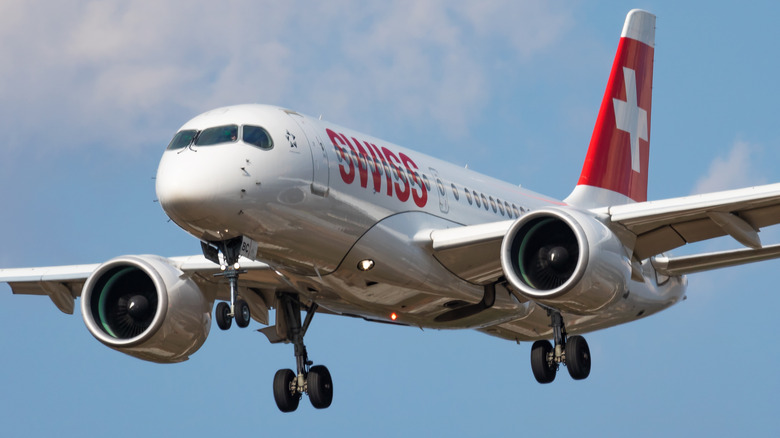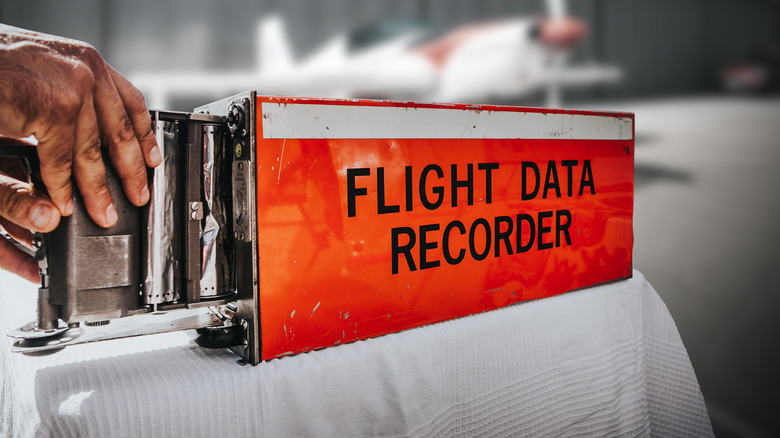Deadliest Plane Crashes In History
In 2020, large commercial passenger planes were involved in 40 accidents, and 299 people died, according to Dutch Aviation consulting firm To70 (and reported by Reuters). This includes the 176 people who were killed in January 2020 after a Ukrainian plane was shot down. The same source reports that the number of plane accidents was lower than typical in 2020 due to a decrease in travel as a result of the COVID-19 pandemic. It's worth noting that there was just one fatal crash for every 3.7 million flights, a very small percentage.
The good news is that aviation-related deaths have been dropping over the last 20 years. According to the Aviation Safety Network (via Reuters), between 2016 and 2020, there were around 345 deaths annually involving commercial passenger and cargo planes. As for plane crashes specifically, they don't occur too regularly, particularly in recent years, but when they do, they often receive a lot of media attention. Check out some of history's deadliest plane crashes.
September 11, 2001 terrorist attacks
Without a doubt, the deadliest plane crashes in history were the September 11, 2001, terrorist attacks. Nineteen hijackers commandeered four U.S. commercial airplanes, and 2,977 people were killed in New York City, Washington, D.C,. and in an area near Shanksville, Penn., according to CNN. American Airlines Flight 11 and United Airlines Flight 175 were purposely crashed into the World Trade Center in lower Manhattan, killing 2,753 people. American Airlines Flight 77 crashed into the Pentagon in Washington, D.C., killing 184 people. United Airlines Flight 93 crashed into a field in Pennsylvania, where 40 passengers and crew members died.
Casualties included 343 New York City firefighters, 23 New York City police officers, and 37 Port Authority officers. Victims ranged in age from 2 to 85 years old, the majority of whom were male. As of October 2019, the medical examiner's office has positively identified just 60% of the World Trade Center victims' remains.
Al Qaeda leader Osama bin Laden admitted to being responsible for the attacks, and they spurred the creation of the Department of Homeland Security, according to Forbes. The attacks caused economic loss of approximately $123 billion, and airline travel also decreased for several years.
March 27, 1977 Tenerife airport disaster
It may be hard to imagine, but one of history's most deadliest airplane crashes involved a runway collision with two jumbo jets. On March 27, 1977, on the Spanish island of Tenerife, Pan American Boeing 747 Flight 1736 hit another 747, KLM 4805, at Los Rodeos Airport, according to HistoryNet. The crash occurred around 5 p.m., and 583 people died, making it the deadliest crash in aviation history after the 9/11 terrorist attacks. One of the major issues was that Captain Jacob van Zanten of KLM 4805 initiated his takeoff roll before getting clearance from air control.
Several other factors contributed to the collision. Both planes were carrying passengers to Gran Canaria, but a terrorist group set off a bomb at Gran Canaria's Las Palmas airport terminal, which postponed and diverted several flights. The Pan Am and KLM jets flew to nearby Tenerife to wait for instructions. Captain van Zanten refueled the KLM plane, making it heavier and requiring more speed to leave the ground. Fog rolled in and visibility started to become a problem. Unfortunately, both airline crews were confused about the runway exits and taxi instructions they were told to use.
The planes ended up facing each other on the same runway, but the pilots couldn't see each other due the fog. Even the air traffic controllers couldn't see the planes. Plus, there was no ground radar. The collision killed everyone on board the KLM flight and the majority of those on the Pan Am flight.
August 12, 1985 Mount Osutaka airline disaster
On August 12, 1985, Japan Airlines flight 123 crashed in the Gumma prefecture of Japan, killing 520 people. Known as the Mount Osutaka airline disaster, the event started with a flight that was completely booked when it left Tokyo's Haneda airport at 6:12 p.m. for a one-hour trip to Osaka. The following day was a holiday, so many travelers were either on the flight to visit family or for vacation, according to Britannica. After the plane ascended to 24,000 feet, the pilot issued a distress call and complained about losing altitude and having problems controlling the aircraft. It fell to about 10,000 feet, and around 30 minutes later crashed into Mount Takamagahara, near Mount Osutaka in the Kantō Range.
Since the crash site was so remote and the terrain was treacherous, it took rescue crews 14 hours to reach it. Some volunteers traversed the terrain on foot, while paratroopers accessed the scene via helicopter. Only four of the 524 people on board survived. The cause of the crash was identified as a missing tail fin that was probably weakened due to numerous landings and takeoffs. The pilot was praised for keeping the plane in the air for nearly 30 minutes after initially initiating a distress call.
November 12, 1996 Charkhi Dadri mid-air collision
Language problems and outdated gear contributed to the deadliest mid-air collision in aviation history, which claimed the lives of 351 people, according to All That Is Interesting. On November 12, 1996, the pilot of Kazak Airlines Flight 1907 was given permission to descend to 15,000 feet on approach to India Gandhi International Airport. Meanwhile, the pilot of Saudi Arabian Airlines Flight 763 was given permission to ascend to 14,000 feet. The Kazakh aircraft was traveling to the airport, while the Saudi plane was leaving it. The plan was that the planes would be 1,000 feet apart when they crossed paths.
Unfortunately, the planes wound up colliding and struck each other while flying at over 300 mph, which All That Is Interesting explains is more than 700 times the force of a head-on car crash.
Witnesses saw a giant fireball in the sky, and debris fell over a 6-mile radius. The Saudi plane, a 747, had 312 people on board, while the smaller Kazakh plane had 39 passengers and crew members. One of the major issues was that the pilots from Kazakhstan used the metric system, while the New Delhi air traffic controllers used feet in their instructions. Also, the Kazakh crew was not very proficient in English. In addition, the Saudi aircraft featured an updated transponder, which didn't work with the airport's proximity alert system. The Kazakh pilot was blamed for the incident, because he flew below 15,000 feet without permission from the control tower.
March 3, 1974 Turkish Airlines Flight 981
The deadliest plane crash in France's history occurred on March 3, 1974, when Turkish Airlines Flight 981, which operated between Istanbul and London, crashed in the Ermenonville forest. All 346 passengers and crew members were killed, according to Aerotime Hub.
The McDonnell Douglas DC-10 aircraft had successfully landed at Paris-Orly Airport, refueled, and took off for London-Heathrow Airport. Less than 10 minutes into the flight, a cargo door opened, and the subsequent decompression caused six passengers to eject. Their bodies were later found around 9 miles from the crash site.
The cables in the tail control area of the plane were damaged by the depressurization, and the plane started to descend, hitting the ground at 434 mph. Investigators later determined that the cargo door had a faulty design in which it appeared closed and locked, but the safety pins were in fact not engaged. An indicator in the cockpit also showed that the cargo door was closed when it wasn't. French authorities also determined that the relief vents were too small to tolerate the depressurization that occurred, and as a result cargo doors and pressure vents were subsequently modified on all DC-10s.
February 19, 2003 Iran Ilyushin Il-76 crash
On February 19, 2003, an Iranian Revolutionary Guard Ilyushin IL-76MD plane was flying from Zahedan to Kerman when it crashed 330 feet below the Sirach Mountain peak in southeastern Iran. All 289 passengers and crew members died in the crash. The soldiers were reportedly in the region for ”an important mission." Thirteen people had elected to take a bus to Kerman instead of the flight, and escaped the crash.
The crash took the lives of numerous high-ranking soldiers, colonels, and generals, according to the New York Times, and the Revolutionary Guard hadn't lost so many members since Iran's war with Iraq, which ended 15 years earlier. What makes the crash even more tragic is that it occurred just three minutes before the flight was supposed to land in Kerman.
The crash was blamed on bad weather. An air traffic controller claimed that the aircraft was flying at a lower altitude than recommended. Before controllers lost contact with the pilot, the pilot reported that he was attempting to get closer to the airport because of weather concerns.
May 25, 1979 American Airlines Flight 191
On May 25, 1979, American Airlines flight 191 was en route to Los Angeles when it crashed near Chicago, Illinois, killing 273 people. After leaving Chicago O'Hare Airport, the aircraft's No. 1 engine detached from the wing, according to Simply Flying. The pylon assembly also separated from the wing, causing a 3-foot section of the wing to rip off. The hydraulic systems were damaged, and while the pilot was able to ascend to around 300 feet, the crew eventually lost control. The left wing went into an aerodynamic stall, and the plane rolled to the side at a 112-degree angle. The plane then crashed 1,400 meters from the runway. All passengers and crew members died, as did two people at a garage near the crash site.
Investigators determined that two months prior to the flight, the engine's pylon assembly was damaged during maintenance. American Airline engineers had removed the engine and pylon from the wing as a single unit instead of separating them. The gear was damaged while being transported on a forklift truck. This resulted in fatigue cracking, which got worse each time the aircraft took off or landed. Eventually, the cracking turned into catastrophic failure.
November 12, 2001 American Airlines Flight 587
When American Airlines Flight 587 crashed in Queens, New York, on November 12, 2001, people initially wondered if it was connected to the 9/11 terrorist attacks that occurred just two months earlier. However, investigators determined that the crash, which killed all 260 people aboard the aircraft, including five infants, was an accident, according to the Daily News.
The flight was en route to the Dominican Republic, and investigators initially believed the Airbus A300 had experienced a massive mechanical failure. "Communications from the cockpit were normal up until the last few seconds before the crash," Marion Blakey, chairwoman of the National Transportation Safety Board, said at the time.
Still, the crash prompted New York City Mayor Rudy Giuliani to close bridges and tunnels into city in case the event was terror-related. The National Transportation Safety Board eventually determined that the cause of the crash was "aggressive use of the rudder that snapped off the vertical stabilizer," which led to the plane's engines separating and then crashing into a house, according to AMNY.
November 28, 1979 Mount Erebus Disaster
Over 40 years ago, on November 28, 1979, an Air New Zealand sightseeing plane was flying over Antarctica when it crashed into the side of a volcano, killing 227 passengers and 30 crew members. Those involved in search and recovery operations were unable to identify 44 people, according to the BBC. Captain Jim Collins had descended to about 2,000 feet so passengers could get a better view, and the crew realized that there was a mountain ahead of them, not the snow and ice they expected. The plane had ended up on the wrong flight path and tragically struck Mount Erebus.
One cause of the incident was the pilots were given a flight path that was different to the one that was in the plane's computer. Instead of flying over ice and water in the McMurdo Sound, the aircraft was directed over Ross Island and Mount Erebus. In addition, there was a weather condition known as a whiteout, in which the light on the white snow and ice below and the clouds above tricked the crew into thinking there was clear visibility. The pilot followed the automatic flight path, thinking he was seeing ice and snow on the water, not the face of Mount Erebus.
Investigators determined that the plane wouldn't have crashed had it been flying at a higher altitude. However, Antarctic flights commonly traveled at very low altitudes to give passengers better views of the scenery.
September 26, 1997 Garuda Indonesia Flight 152
On September 26, 1997, Garuda Indonesia Flight 152 was flying from Jakarta, Indonesia, to Polonia International Airport in Medan, North Sumatra, when it crashed into a mountainous woodland area about 30 miles from Medan, according to the National Transportation Safety Committee. The pilot and an air traffic controller were seemingly confused about the direction the plane was supposed to turn before making its final descent, as reported by the Washington Post.
The fully operational plane experienced "controlled flight into terrain" (CFIT) when it struck some trees, killing the 234 people on board. On average, 25 airliners, commuter aircraft, and air taxis crash each year for no apparent mechanical reason and are labeled CFIT.
The pilot of Flight 152, Hance Rahmowiyogo, had more than 20 years of flying experience at the airline and over 12,000 flying hours under his belt. Investigators concluded that low visibility caused by the Southeast Asian haze caused the crash. The incident is the deadliest single-plane crash in Indonesia, and was the deadliest aviation accident in 1997, according to Kiddle.
September 2, 1998 Swissair Flight 111
On September 2, 1998, while traveling off the coast of Nova Scotia from New York City to Geneva, Swissair Flight 111 crashed, and all 229 people on board died, according to Britannica. Many of the passengers worked for the United Nations. About one hour after taking off, there was a strange odor in the cockpit followed by smoke. The pilots believed it was an issue with the air conditioning, but there was actually a fire in the ceiling. The pilots changed course to land in Halifax, about 56 miles away, and then several of the plane's systems started to fail. The aircraft crashed into the water and split apart.
There were no survivors, but salvage efforts continued until 1999. Some of the cargo included diamonds, jewelry, and the painting "Le Peintre" by Pablo Picasso, of which only a tiny piece was retrieved. The Transportation Safety Board of Canada determined that the crash was the result of faulty wiring, which caused the flammable insulation above the cockpit to catch fire. A newly installed entertainment system was also suspected of contributing to the crash.
June 1, 2009 Air France Flight 447
On June 1, 2009, Air France Flight 447, which was traveling from Rio de Janeiro to Paris, crashed into the Atlantic Ocean, and all 228 people on board were killed. According to France's Bureau of Investigation and Analysis, the pilots made several errors in response to technical problems, which led to the crash, as reported by CNN. Ice crystals had formed on the plane's pitot tubes, the autopilot disconnected, and the pilots did not know how to respond appropriately. There were issues with the aircraft's speed sensors, and the pilots failed to correct the plane's trajectory.
This failure "completely surprised" the crew, according to the agency's 2012 report about the crash. The crew inadvertently destabilized the flight path, which caused the plane to go into a sustained stall. However, the crew didn't realize thatthe plane was experiencing a stall and pointed the nose up instead of downwards to recover. CNN aviation specialist Richard Quest said the crash never should have occurred. As a result of its investigation, France's Bureau of Investigation and Analysis issued 25 safety recommendations.
